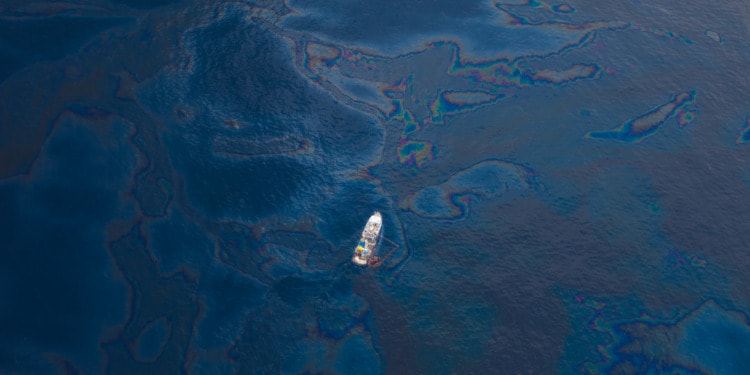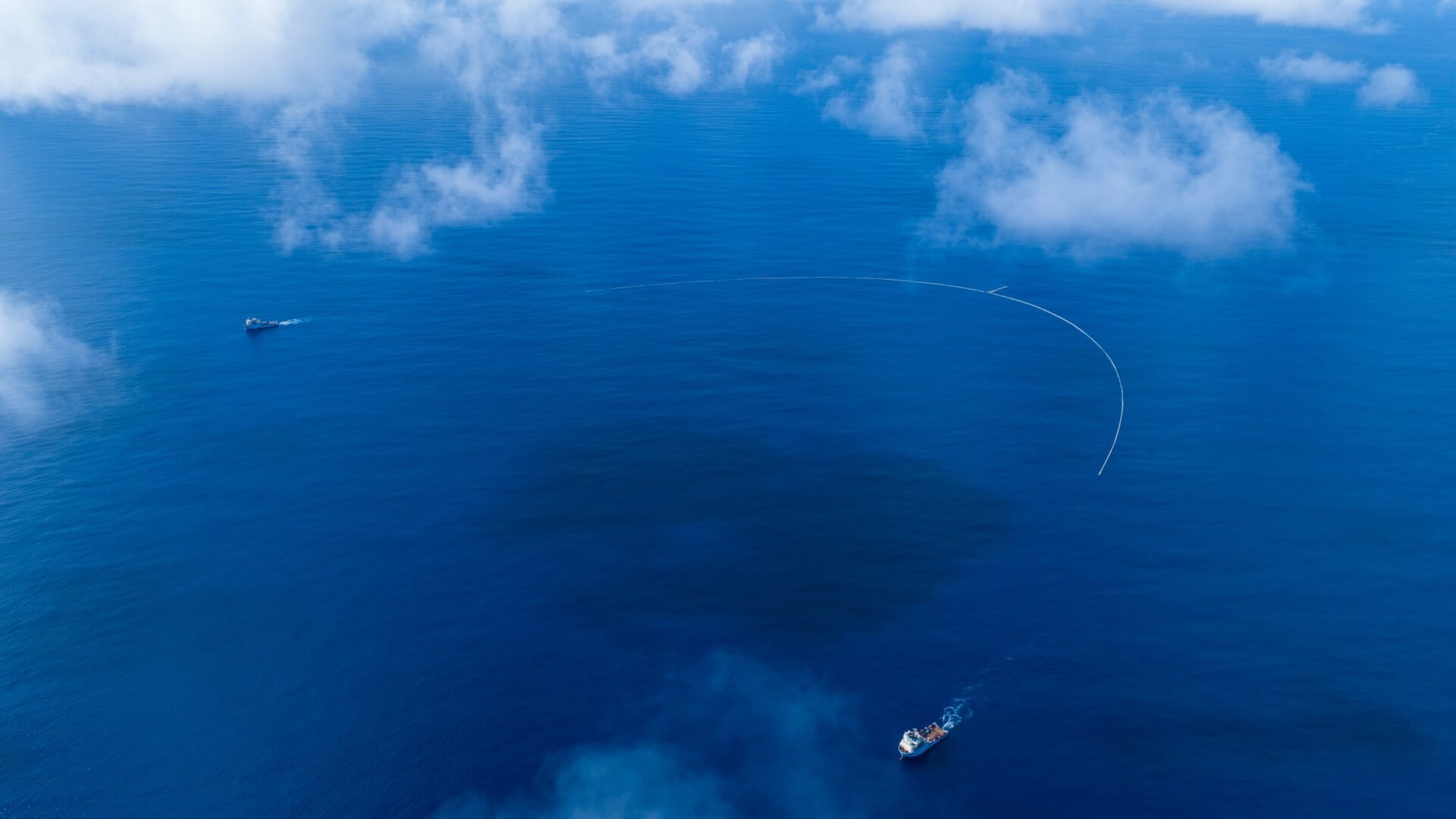This story on air pollution originally appeared in science magazine EOS and is part of Covering Climate Now, a global journalism collaboration strengthening coverage of the climate story.
Ian MacDonald, a retired professor in the Department of Earth, Ocean, and Atmospheric Science at Florida State University, has been watching oil slicks in the oceans for decades — he and his colleagues used pictures taken from the space shuttle to verify oil slicks from natural sources in the Gulf of Mexico back in the 1990s.
Now, MacDonald and colleagues at Florida State and in China have discovered that humans are responsible for more than 90% of oil slicks — from sources such as ships, pipelines, and platforms. The number was much higher than they expected, MacDonald said: “This was a huge surprise.” That’s because previous research had shown an almost even split in oil slicks from human and natural sources like ocean seeps.
New research published by @ScienceMagazine: A team from @FSU_EOAS, @USFCMS and China's Nanjing University found that humans are responsible for over 90% of the world's chronic marine oil pollution, a much higher proportion than previously estimated. https://t.co/NebcBJHZt6
— FSU Research (@FSUResearch) June 16, 2022
The researchers used artificial intelligence to examine more than 560,000 satellite radar images collected between 2014 and 2019. They pinpointed each small slick of oil floating on the ocean surface, assessing its location, size, and potential source. Most slicks were near coastlines — 90% happened within 160 kilometers (100 miles) of land and were concentrated along shipping routes.
The researchers saw fewer slicks near oil platforms in the Gulf of Mexico than in other areas, suggesting that U.S. regulations may be having a positive impact on the amount of oil leaking. The research was published in June in the journal Science.
Related Articles: Victory for Climate Movement: Oil Giant Shell Condemned by Dutch Court | The Village That Stood up to Big Oil – and Won
MacDonald suspects that the number of human-caused oil slicks in the oceans is increasing, and he hopes that the study’s data will be used to target sensitive marine areas for monitoring, research, and conservation.
“We have a road map of where to look to investigate possible impacts of chronic oiling — as opposed to the acute oiling resulting from major spills,” he said, adding that he has been contacted by explorationists from major oil companies.
Invisible Impacts
Most people think of ocean oil pollution in terms of big spills, like the 2010 BP spill in the Gulf of Mexico. The oil slicks in this study are smaller but have chronic impacts on larvae and plankton in the ocean food chain, said MacDonald.
“There are already concerns for the viability of planktonic systems due to ocean acidification,” he explained. “These results suggest an additional, underinvestigated stressor concentrated in crucial coastal regions worldwide.”
The new research is good to have quantified, but its conclusions are obvious, said Daniel Kammen, a professor of energy at the University of California, Berkeley, who was not involved in the new study. “Coastal infrastructure is leaky and not maintained, so it’s no surprise that this is the dominant — and underestimated — source” of oil slicks, he said.
Still, having numbers to track and measure oil slicks makes it easier to address them. “Each city, state, and nation needs to develop transparent spill and leak reporting systems,” Kammen said, “because the majority of issues take place in and around underserved communities where reporting is often, chronically, poor.”
MacDonald pointed out that the oil slicks can also reveal invisible human impacts on the world’s oceans. “Oil slicks are a tracer on a wide range of human activities that impact the oceans that can be difficult to aggregate for assessment, such as coastal land use, ship noise, dredging,” he said. “Human well-being depends on healthy ocean ecosystems.”
Editor’s Note: The opinions expressed here by the authors are their own, not those of Impakter.com — In the Featured Photo: A ship floats amongst a sea of spilled oil in the Gulf of Mexico after the BP Deepwater Horizon oilspill disaster. Featured Photo Credit: Wikimedia Commons.














